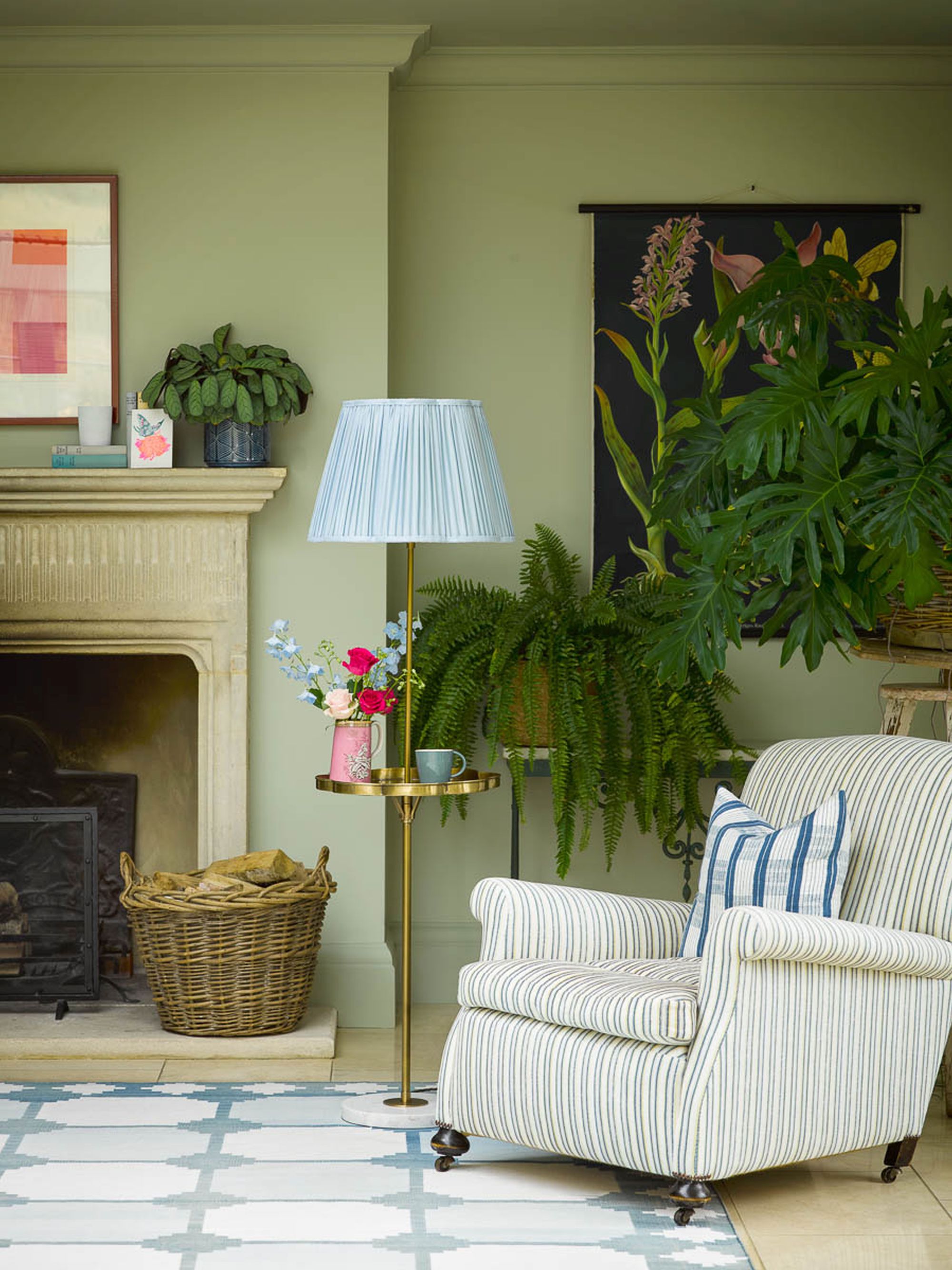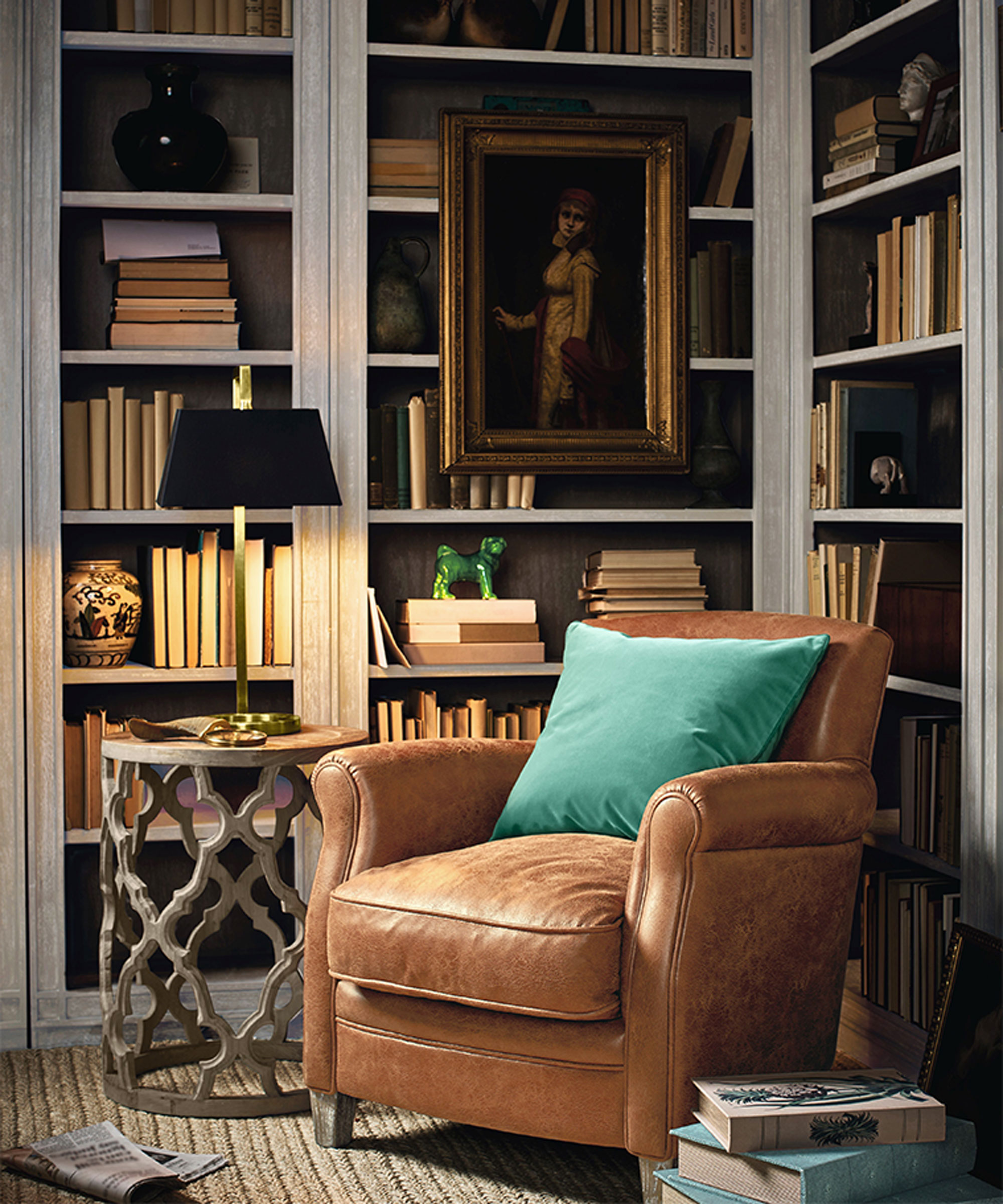What is lampscaping? Interior designers share their tips for creating a cohesive lighting scheme across the whole home
Thoughtfully lighting your home makes a good design scheme great. Here's what the experts have to say about the 'lampscaping' technique


Bad lighting can derail even the most fabulous design scheme, so getting a cohesive and cozy lighting setup is of the utmost importance. But with so many options for lamps, pendants, sconces, and more on the market, it can be hard to know where to start. From picking out light fixtures to placing them strategically around your space, the process can prove quite challenging. That's where lampscaping comes in.
Lampscaping has become a popular method of plotting out and perfecting lighting ideas in any space, and it might just be the secret to a well-lit and welcoming home. To hear a bit more about lampscaping, we spoke with interior designers and lighting experts, and they shared their top tips for lighting a home with finesse. This is what they had to say about the technique, plus mistakes to avoid when curating your very own lampscape.
What is lampscaping?

'Lampscaping emphasizes the importance of treating lighting as an integral part of the overall design process, rather than just a functional necessity. By considering factors such as the room’s layout, decor, mood and desired aesthetic, lampscaping aims to create a cohesive and visually engaging environment through thoughtful lighting arrangements,' says Audrey Scheck, interior designer and founder of Audrey Scheck Design.
Lighting shouldn't be an afterthought when designing your home – instead, it should come close to the top of your list of tasks. Even if you've given time and energy to every other element of the design process, good lighting can make or break a room. Lampscaping offers an accessible approach to crafting a thought-out design scheme – but some designers say the term is just a little bit misleading.
'Lampscaping is a useful way of getting across the idea that you should use multiple light sources in a room space, much as you would use a number of small lights in a landscape to brighten a yard or pathway. It's a little misleading, however, in that you shouldn't rely just on lamps alone. Instead, think of lighting a room from multiple sources and types set all around a room, so table and floor lamps, accents lamps on shelves, wall sconces and ceiling lights,' says John Barnes, design expert at Lamps Plus.

Jamie Young, president and founder of Jamie Young Co., agrees, saying that the term 'lampscaping' puts too much emphasis on just that: lamps. To balance out a thorough arrangement, she suggests paying attention to 'pendants, chandeliers, flush mounts and sconces' as well. These non-lamp lighting solutions contribute to a layered, easy-on-the-eye lighting scheme.
'Table and eye-level lighting is needed, but light can tell a story from any angle, and we shouldn’t forget the effect that overhead or wall lighting can have on a room,' says Jamie.
Design expertise in your inbox – from inspiring decorating ideas and beautiful celebrity homes to practical gardening advice and shopping round-ups.
Paul Nulty – architectural lighting designer and founder of Nulty – says he isn't sure the term 'lampscaping' does the importance of lighting a home justice. Because it places more emphasis on the lamps and light fixtures you pick out and where you place them rather than 'the lighting effect itself,' Paul worries that the approach won't deliver on a truly successful lighting scheme.
'If we’re not considering the quality of light that we’re trying to achieve, there’s a danger that we might flood a space with light. We need to work backward and focus on the interplay play of light on surfaces and the different lighting techniques that bring a scheme to life. Lighting design is the right term,' says Paul.

He says the term 'lighting design' fits the bill much better, as it 'encapsulates how we use ambient light to make a space feel warm and welcoming, how we use accent illumination to draw the eye to a specific focal point or create a moment of visual interest, and how we use contrast between high and low light levels to switch the mood and functionality of a space.'
'It’s also about how we give people the ability to adjust the light levels in their space to suit their personal requirements, which is arguably where lamps really come into their own – they allow us to adjust the lighting aesthetic and instantly evoke a different mood,' says Paul.
No matter your approach or how you put it, 'balanced lighting is as crucial to a beautifully designed home as seasoning is to an exquisite gastronomical dish,' says Claire Pendarves, independent lighting consultant for The Soho Lighting Company. That's why she says lighting should never be 'merely an add-on.'
'Beautifully designed lighting is intangible. When it’s done well, the space just feels harmonious, mood and function can be controlled, and transitioning between areas of the interior is smooth and effortless. When lighting hasn’t been carefully considered, the area can seem flat and lacking atmosphere, or even uncomfortable on the eye,' says Claire.
How to successfully 'lampscape' your home

So how do you create a successful 'lampscape' in your own home? Interior designers say the process is all about layering light and creating balance: 'When curating a lighting plan for a home, several key considerations come into play to ensure that the lighting scheme is both functional and aesthetically pleasing. We tend to lean into layered lighting, aiming to incorporate multiple layers of lighting, including ambient, task, and accent lighting,' says Audrey.
Layering light throughout each room of your home 'adds depth and flexibility to the lighting scheme, allowing for different moods and functions within a space,' she adds. To achieve a beautifully layered scheme, she suggests starting with the 'size and layout of each room' and making a considered placement plan.
'Larger rooms may require multiple light sources to evenly illuminate the space, while smaller rooms may need fewer, strategically placed fixtures to avoid overwhelming the area,' says Audrey.
'Every project is different,' adds Paul, so each requires a different approach and follows different rules. But he adds that there's a 'common denominator' across each and every design he creates: 'the people that will use that space.'
'Before you start to make any decisions about the lighting design, it’s important to step back and unpick the design narrative. What are you trying to say with that space? Who is the scheme intended for? How will it be used? When you understand why you are lighting a space, the how becomes a lot easier. After that, it’s a matter of weaving together different lighting techniques to achieve the ambient and functional illumination that the homeowner needs, then adding decorative touches in the form of a bespoke chandelier or an elegant wall sconce to make the scheme feel distinctive and unique,' says Paul.

'View the space as a whole. We don’t live our lives in a series of still photographs; we move from one area to the next, and as we transition, the lighting of the space we are approaching has an effect on how we feel in our current position. Rather like life,' says Claire.
John adds that going in with a plan is a perfect first start – lighting is often left to the last minute, but 'A little pre-planning can pay big dividends,' he says. John suggests examining how you might use the space, and what activities you'd like the space to accompany, then designing your lampscape accordingly.
'For example, when choosing seating, think about whether you'll be using the piece for reading, TV watching, entertaining, or just visual display. The answer to this question goes a long way to determining what kind of lighting you'll need... I also like to choose designs that have user-centric controls that are easy to reach and use. Think touch dimmers, swing arm lamps that allow you to easily adjust the placement of a light and reach the control switch and so on,' he says.
Jamie agrees, saying that she asks about the 'function of the room' first when embarking on a lighting design plan. Each room requires something different, and everything from decor style to flow plays a role in how the lighting will impact your lifestyle.
'For example, a guest bathroom would be used for getting ready in the morning, so I would want to make sure the vanity lighting choices I make are strong and angled correctly for use in a mirror. In contrast, a powder room off a living room may be used briefly, and I will consider aesthetics more since functional light is not as important – beautiful sconces, maybe a small lamp, soft lighting,' says Jamie.
How to avoid 'the big light' with lampscaping

'The big light,' or one central overhead light that illuminates an entire space, has faced a lot of heat in recent years – harsh and unforgiving, this type of lighting doesn't do much for a room or the people in it. While certain 'big lights' can make a stunning statement and wow guests, others need quite a bit of assistance if you're looking to complete a cohesive scheme.
'The big light suits large spaces and often serves more as a design statement than a primary source of light. They can look splendid in the right place but the lighting effect will be one dimensional if relied on too heavily. However, mixing up a balance of downlights (where appropriate), wall washers, wall lights, and accent lighting is what pulls the whole scheme together. Not all elements need to be used, but all may be considered,' says Claire.

'On its own, it's just a big "blah" in terms of room lighting. It doesn't provide any sense of warmth or depth to a room, and it definitely isn't welcoming. I'd recommend it for room vacuuming and not much else,' adds John.
Instead of looking to the big light for illumination, John suggests 'lampscaping' by picking out multiple, scattered light sources for your space. By using a combination of lighting trends like table lamps, floor lamps, wall lighting, small accent lights and ceiling lighting, John says you'll be left with a much nicer space.
'Using a variety of light sources gives you what designers call layers of light. Your eye dances around the room and the multiple sources make the room appear warm and welcoming. Place the lights on dimmers so you can vary the intensity of the lights to suit various room activities like TV-watching or entertaining. If you add a dimmer to that big light, you can even add it to your layers of light,' he says.
Lampscaping mistakes to avoid

'Common lighting mistakes that homeowners should try to avoid when lighting their homes include inadequate lighting, such as relying solely on overhead fixtures without incorporating task or accent lighting. Another mistake is improper placement of lighting fixtures, leading to uneven illumination or glare,' says Audrey.
She suggests making sure your light fixtures meld with the 'overall design style or scale' as well. This will help you to avoid 'detracting from the aesthetic goal of the home. 'Lastly, neglecting to consider energy efficiency by using inefficient light bulbs or failing to install dimmer switches can result in wasted energy and higher utility costs,' she adds.
The color temperature of the light bulbs within your lampscaping scheme are also make or break, proving vital to the overall look and feel of your space. Jamie says that the importance of light color is often overlooked, but she emphasizes the difference that swapping out the shade can make on a space.
'Bright, white lighting should be used in rooms and areas with specific tasks like bathrooms, kitchens and offices. However, bedrooms should have warm lighting as this trains the eye for relaxation as opposed to being alert,' says Jamie.

'People often make style over substance decisions when it comes to their lighting, particularly when it comes to investing in a statement lighting piece as the misconception here is that is simply needs to be beautiful,' says Paul.
Though the visual appeal of your lighting scheme is undoubtedly important, you'll need to keep the 'materiality and the quality of light' in mind as well. Sometimes, just one statement light fixture can't do the job all on its own, even if it's lovely to look at.
'They invariably need a little help in the form of architectural lighting, which often means carefully balancing the light sources around a fitting to increase the level of refractions and reflections and make the whole environment shimmer,' says Paul.

Claire adds that she commonly sees five main mistakes when it comes to lighting schemes, and they have to do with glare, over-lighting, grids, positioning and control. She first advises that you do everything in your power to steer clear of glare: 'It’s jarring and uncomfortable. It’s possible to have a good amount of light without glare but it’s dependent on the planning and the light fittings selected,' says Claire.
You'll be able to avoid glare in part by sticking with warm, soft lighting that doesn't get too bright. Over-lighting is another mistake Claire sees often, and she says most of the time, the over-the-top intensity isn't needed: 'You don’t need to light every square inch – it’s only by creating areas that are unlit that you can emphasize those that are of prime importance. Light and shade,' she says.
Also, avoid positioning your lighting in grid formations, says Claire: 'We don’t live our lives in squares yet so many downlights are positioned in grids. Downlights are invaluable – in the right place – so plan the areas that need focused lighting and place them accordingly.'
'The devil in in the details,' she adds, mentioning that making sure your lighting is positioned correctly should be high on your list of considerations. If a light fixture, especially one secured to the wall or ceiling, is too high, low, left or right, it can throw the whole formula off completely. And finally, she says 'being able to control the circuits and have the facility to dim the lights is essential.'
Though 'lampscaping' isn't the perfect term to describe the art form of lighting an interior design scheme, it successfully conveys the fact that light sources rarely thrive solo. By opting for a wide selection of light sources and placing them thoughtfully throughout your space, your home will be well-lit and ready for any activity.

Abby was the Interior Design News Editor at Homes & Gardens and is now studying for her Master's degree in Journalism at City University, London. Prior to joining our team, she worked with Better Homes & Gardens, where she wrote and edited content about home decor, gardening tips, food news, and more. She studied Journalism and English Literature at New York University and moved to London to pursue her love of writing in 2023.


